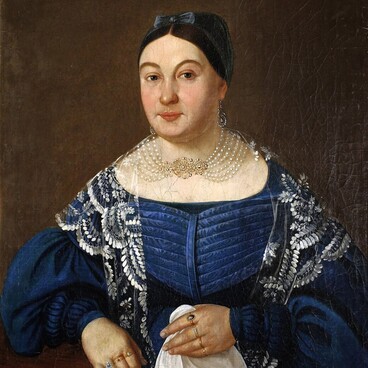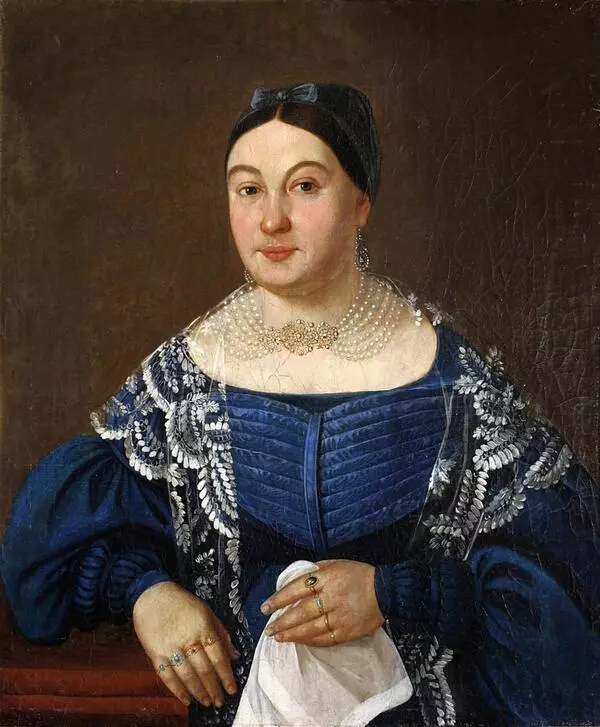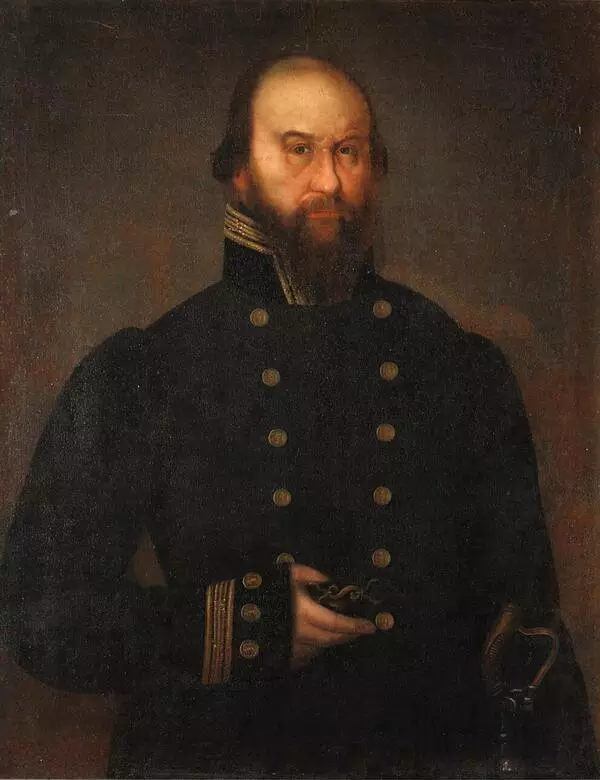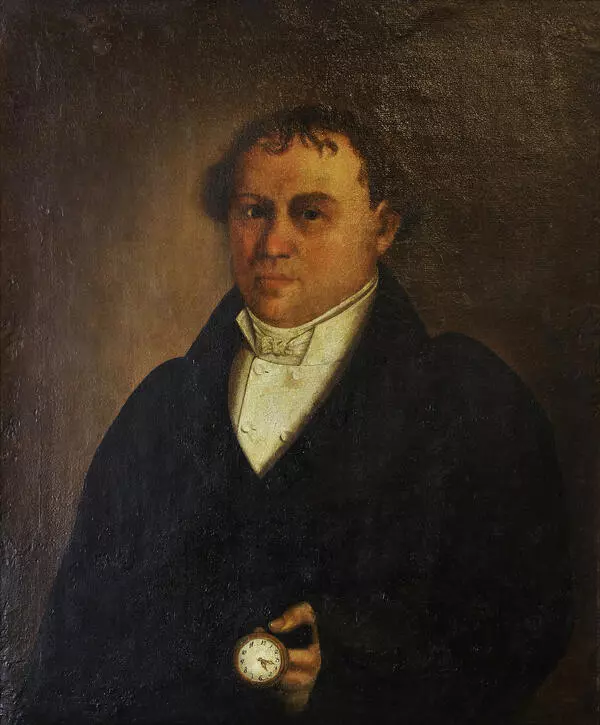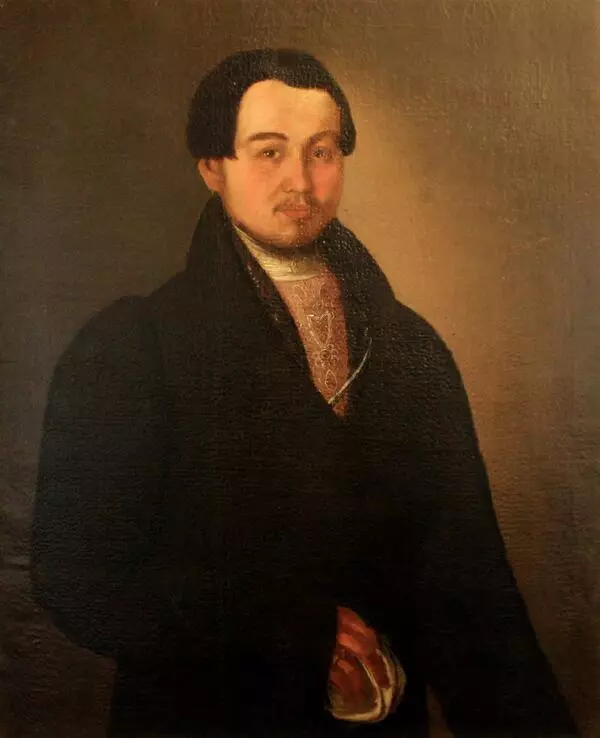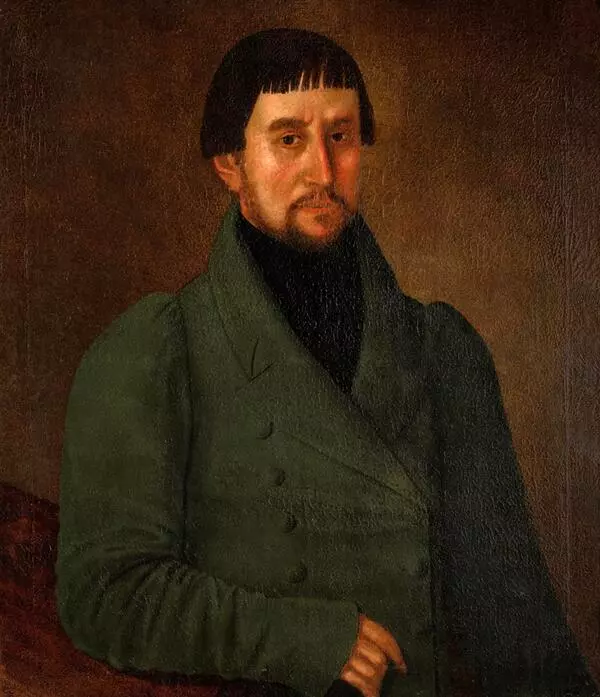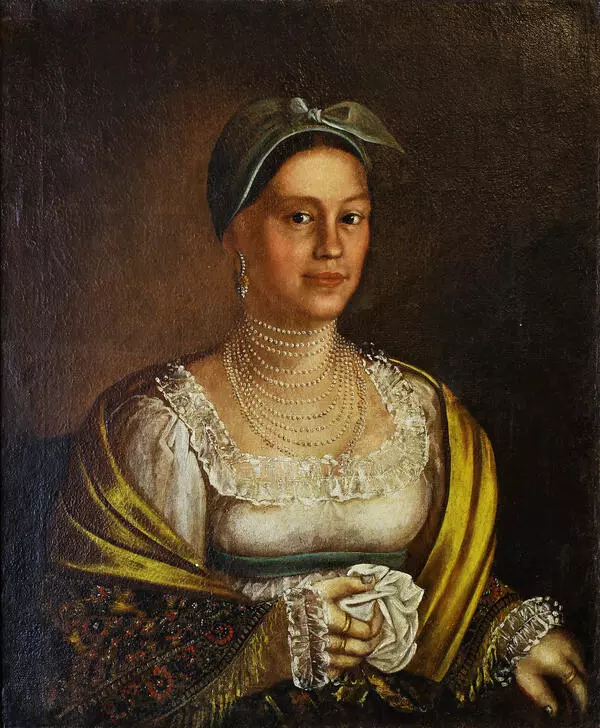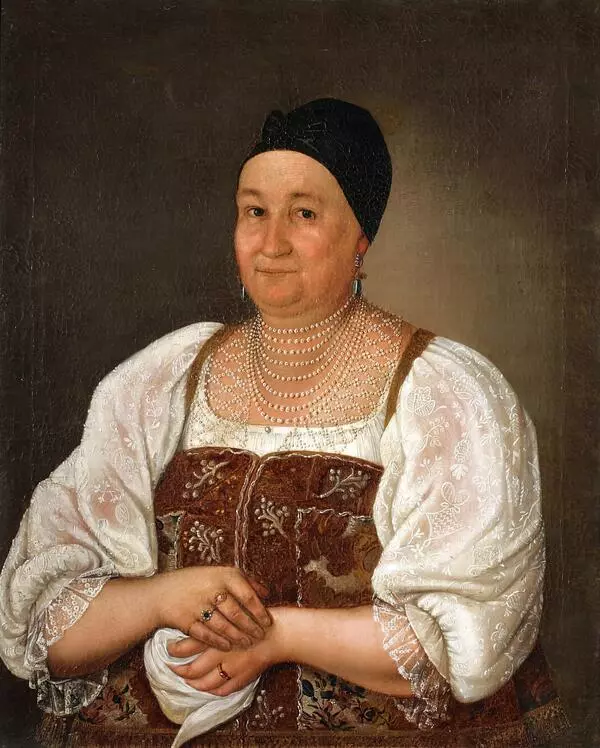The portrait of the young daughter-in-law of the Surins — referred to as “the wife of a merchant’s son” on the back of the canvas — was painted by Ivan Tarkhanov as the last of four portraits, following the family hierarchy based on the “Domostroi” traditions. According to this book, the head of the household was considered the only “person with full rights” in the house, while all the others were merely “children and family members” and were put in order of their importance. Therefore, “the wife of a merchant’s son” followed directly after “the merchant’s son” himself.
“Avdotya Mitrovna”, as she was referred to by her husband in his diary, was portrayed elegantly dressed. The image created by the painter shows the festive aspect of marriage. The slightly over-the-top costume and jewelry indicate the traditional “love of things” typical of Uglich citizens. The portrait seems to represent the ideal described by the character of Pavel Melnikov-Pechersky who dreamed about marriage and described it in the following way, “I would like to dress someone up in silk and velvet clothes, adorn someone with expensive dresses, and show someone to the people as if to say, ‘All of you Orthodox Christians, look at how beautiful my wife is, how nicely she looks! ’”
While in the late 18th century, the dowry still consisted of traditional clothing and decorative items to be worn for many years to come, in the 19th century, the ever-changing fashion required a set of outfits “for going out”, store-bought dresses, and jewelry. In this portrait, the young woman does not cover her hair: instead of a traditional headband, she wears only a light bow that serves to fix a broach. The earrings create a visual connection between the broach and the pearl necklace, however, the wide chain that usually ends under the edge of lace is accompanied not by a string with various items but by a fermoir — a necklace with an elegant insert. Below the neckline, there is a heavy chain attached by a figured pin. All the elements are thoughtfully designed and balanced, and the folded arms with a white kerchief complete the composition at the bottom of the painting, while the broach on the kerchief crowns the image — the artist managed to tame the power of adornment which is just as true to life as the thorough depiction of the dowry.
Yevdokia Dmitrievna and Pavel Matveyevich had 11 children. Yevdokia Surina died when she was only 36. Her husband wrote verses dedicated to her death and soon decided to get married again.
“Avdotya Mitrovna”, as she was referred to by her husband in his diary, was portrayed elegantly dressed. The image created by the painter shows the festive aspect of marriage. The slightly over-the-top costume and jewelry indicate the traditional “love of things” typical of Uglich citizens. The portrait seems to represent the ideal described by the character of Pavel Melnikov-Pechersky who dreamed about marriage and described it in the following way, “I would like to dress someone up in silk and velvet clothes, adorn someone with expensive dresses, and show someone to the people as if to say, ‘All of you Orthodox Christians, look at how beautiful my wife is, how nicely she looks! ’”
While in the late 18th century, the dowry still consisted of traditional clothing and decorative items to be worn for many years to come, in the 19th century, the ever-changing fashion required a set of outfits “for going out”, store-bought dresses, and jewelry. In this portrait, the young woman does not cover her hair: instead of a traditional headband, she wears only a light bow that serves to fix a broach. The earrings create a visual connection between the broach and the pearl necklace, however, the wide chain that usually ends under the edge of lace is accompanied not by a string with various items but by a fermoir — a necklace with an elegant insert. Below the neckline, there is a heavy chain attached by a figured pin. All the elements are thoughtfully designed and balanced, and the folded arms with a white kerchief complete the composition at the bottom of the painting, while the broach on the kerchief crowns the image — the artist managed to tame the power of adornment which is just as true to life as the thorough depiction of the dowry.
Yevdokia Dmitrievna and Pavel Matveyevich had 11 children. Yevdokia Surina died when she was only 36. Her husband wrote verses dedicated to her death and soon decided to get married again.


